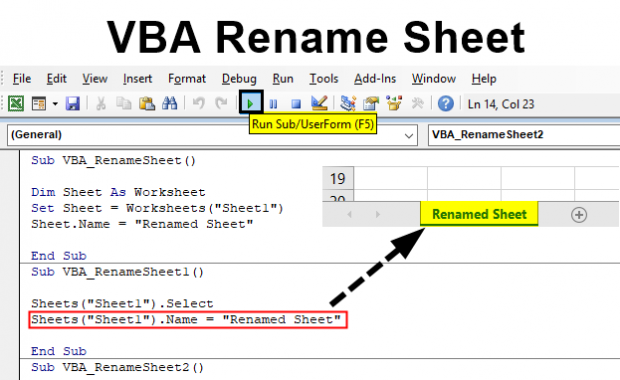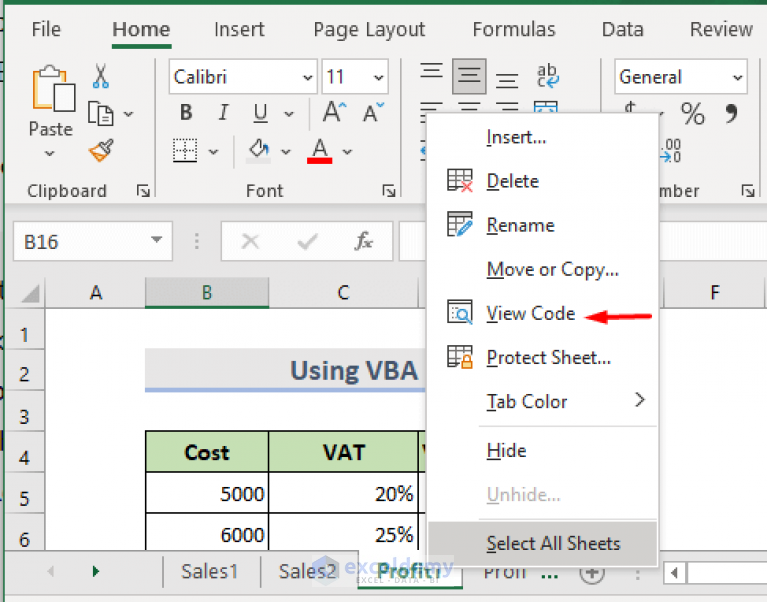3 Ways to Find Last Sheet Name in Excel VBA

In Excel VBA, managing multiple worksheets is a common task, especially when dealing with extensive workbooks. Knowing how to retrieve the name of the last sheet programmatically can be very useful for automation, reporting, or data organization. Here are three effective ways to find the last sheet name in Excel VBA, each serving different needs and levels of complexity.
Method 1: Using the Sheets.Count Property

The simplest method involves accessing the last worksheet by using the Sheets.Count property. This property returns the number of sheets in the workbook, and by indexing this number, you can access the last sheet.
Sub GetLastSheetName_Simple()
Dim ws As Worksheet
Set ws = Sheets(Sheets.Count)
MsgBox “The last sheet is named: ” & ws.Name
End Sub
📌 Note: This method assumes you're dealing with visible sheets only, as hidden sheets might be counted differently or not counted at all in some contexts.
Method 2: Iterating Through the Workbook

This method is useful when you need to perform actions on each sheet before or while finding the last one. Here’s how you can do it:
Sub GetLastSheetName_Iterate()
Dim ws As Worksheet
Dim lastSheet As Worksheet
For Each ws In ThisWorkbook.Worksheets
Set lastSheet = ws
Next ws
MsgBox “The last sheet is named: ” & lastSheet.Name
End Sub
This approach is more flexible because it can be extended to:
- Perform operations on each sheet
- Exclude hidden sheets
- Handle sheet-specific conditions
Method 3: Using Custom Functions for Flexibility

For more advanced users or scenarios where you might need reusable code or additional functionality, creating a custom function is beneficial:
Function GetLastVisibleSheetName() As String
Dim i As Long
For i = ThisWorkbook.Sheets.Count To 1 Step -1
If Not ThisWorkbook.Sheets(i).Visible = xlSheetVeryHidden Then
GetLastVisibleSheetName = ThisWorkbook.Sheets(i).Name
Exit Function
End If
Next i
GetLastVisibleSheetName = “No Visible Sheets”
End Function
Sub TestGetLastSheetName()
MsgBox “The last visible sheet is named: ” & GetLastVisibleSheetName
End Sub
| Method | Use Case | Advantages |
|---|---|---|
| Sheets.Count | Simple and quick retrieval of the last sheet name | Quickest if only the name is needed |
| Iterative Approach | When sheet-specific operations are required | Flexible, allows for sheet processing |
| Custom Function | Advanced usage, reusable code, special conditions | Highly customizable and can handle complex scenarios |

To wrap up our exploration into finding the last sheet name in Excel VBA, each method has its place depending on your exact requirements:
- Sheets.Count Property is the go-to for simplicity and speed when all you need is the name.
- Iterative Approach shines when you're looking to perform actions on each sheet or handle conditions like sheet visibility.
- Custom Functions offer the most flexibility, allowing for reusable and adaptable solutions tailored to complex scenarios.
Why would I need to know the last sheet name?

+
Knowing the last sheet name can be useful for organizing data, automating tasks, or when performing operations that involve all sheets in a workbook.
Can these methods work with multiple workbooks?

+
Yes, by adjusting the ThisWorkbook reference to a specific workbook object, you can apply these methods to any open workbook.
What if there are hidden sheets in the workbook?

+
The Sheets.Count method includes hidden sheets, while the custom function in Method 3 can be tailored to ignore or identify hidden sheets.
Is it possible to add error handling to these methods?

+
Yes, you can incorporate error handling with On Error GoTo or by checking for errors before operations to manage exceptions gracefully.



